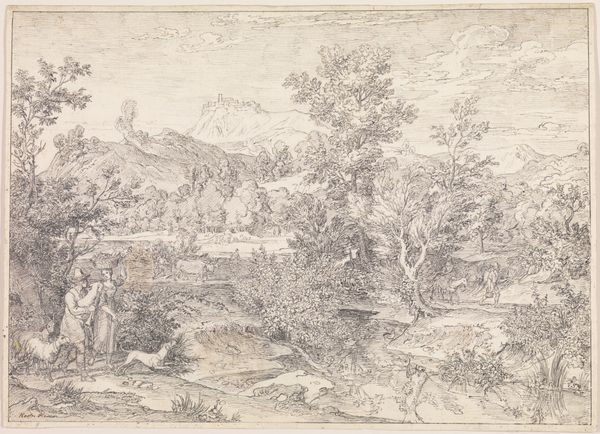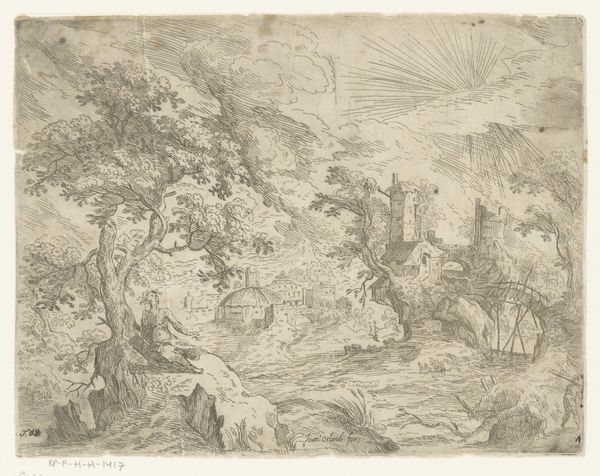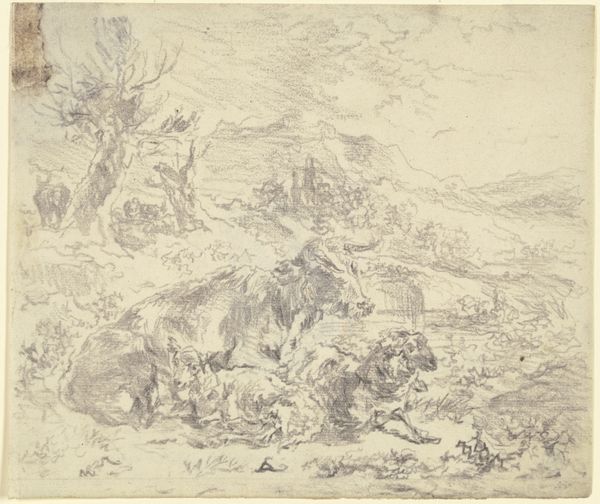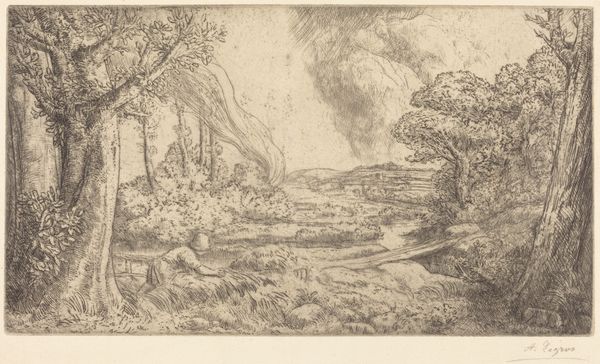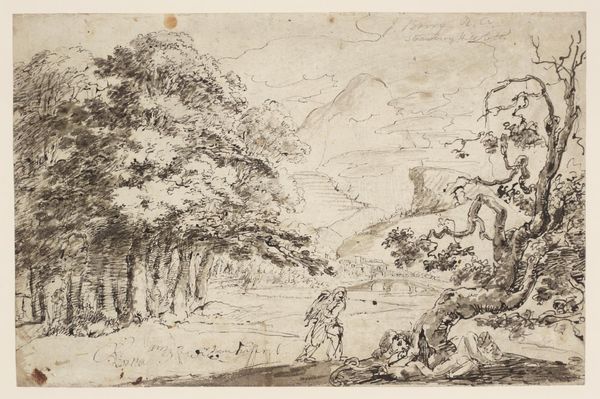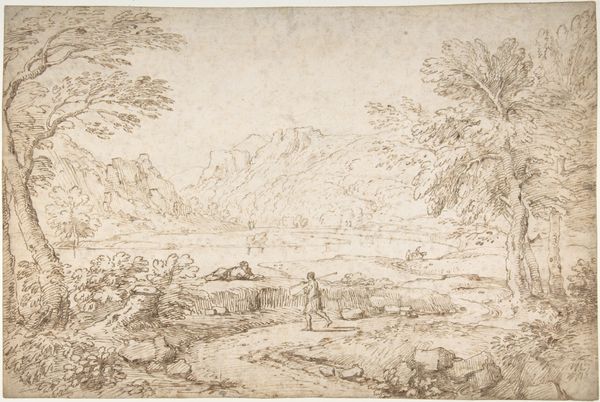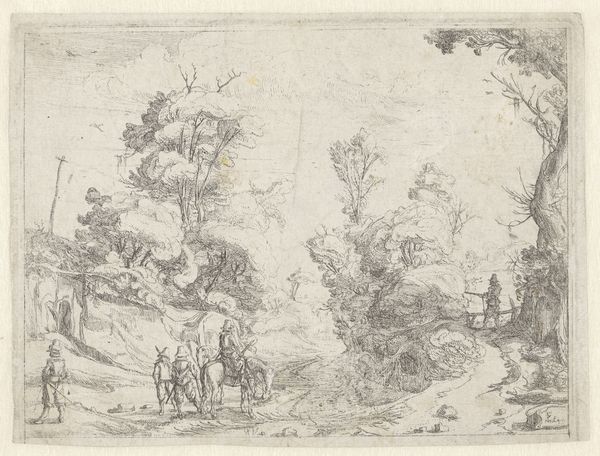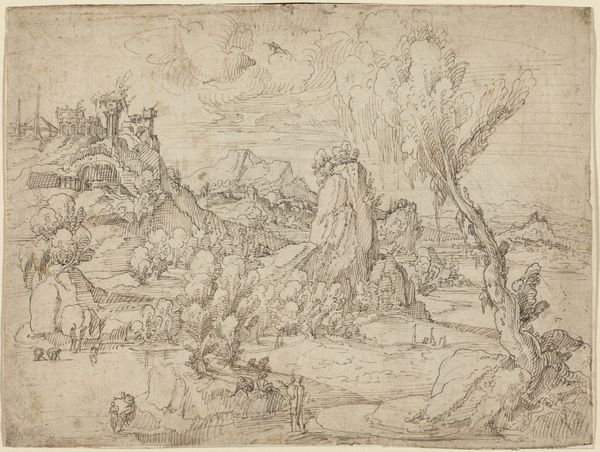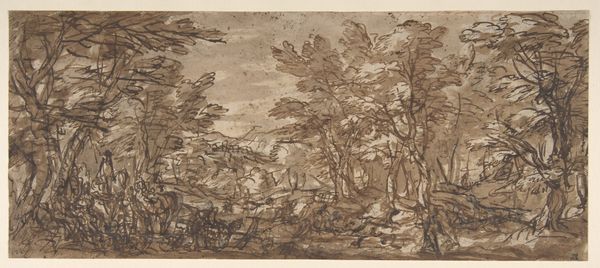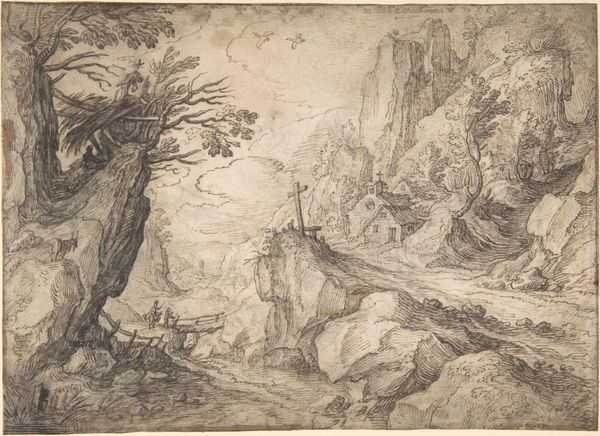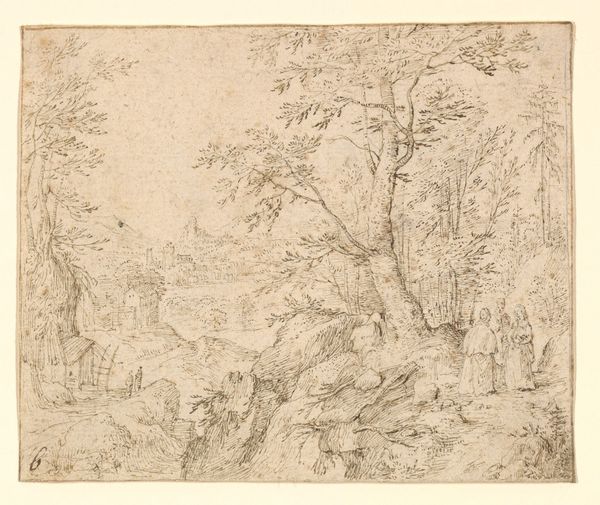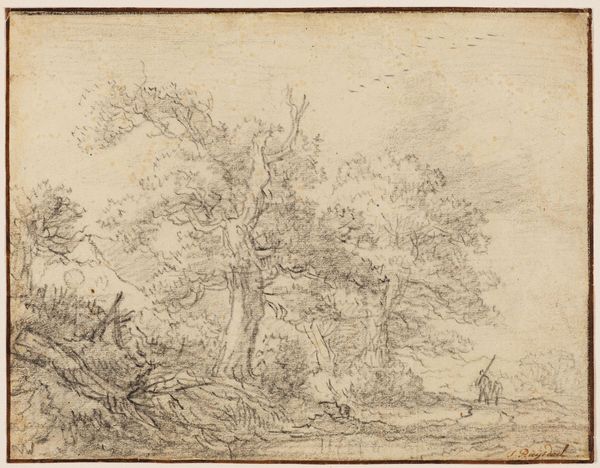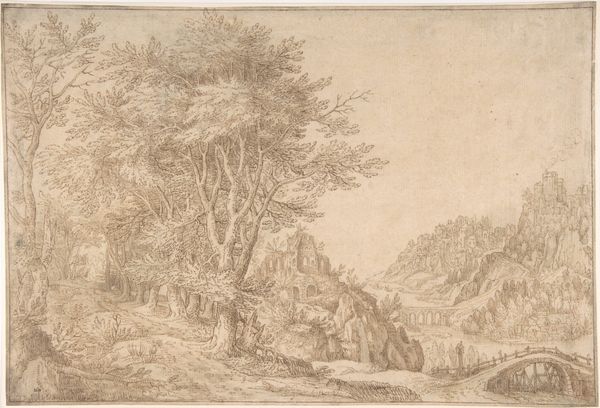
drawing, print, etching, ink
#
drawing
#
ink drawing
#
ink painting
# print
#
pen sketch
#
etching
#
landscape
#
mannerism
#
ink
#
history-painting
Dimensions: sheet: 8 5/16 x 15 1/2 in. (21.1 x 39.3 cm)
Copyright: Public Domain
Editor: This drawing, "Wooded Landscape with Stag Hunt," is attributed to Tobias Verhaecht, dating roughly from 1580 to 1631. It's rendered in ink, and the density of the linework really strikes me. It’s chaotic, yet there's a defined space; How do you interpret this work within its historical context? Curator: That density is key, isn't it? The level of detail packed into the drawing reflects the Mannerist style. Considering this piece from a socio-political lens, we might ask: what function did these intricate landscapes serve in the courts of the late 16th and early 17th centuries? They were status symbols, visualizations of power and dominion over nature, reflecting the elite’s pastimes. The inclusion of the stag hunt amplifies this sense of aristocratic control, especially since access to hunting was highly regulated and gendered. Editor: So, it’s less about the act of hunting itself and more about demonstrating social status? Did the location of the exhibition play any role? Curator: Absolutely. These works, whether displayed in private collections or, later, public museums like the Met, contributed to the ongoing narrative of who holds power and what values are prioritized. The display and interpretation of this piece frames our contemporary understanding of 17th century cultural values, too, doesn't it? It’s interesting how its perception has evolved. Editor: It’s fascinating to see how a simple drawing reveals so much about the world it came from and the one it exists in today! I've really gained a new appreciation for understanding the narrative it offers. Curator: And understanding its context enriches our engagement with art, highlighting its enduring power to speak across time.
Comments
No comments
Be the first to comment and join the conversation on the ultimate creative platform.
